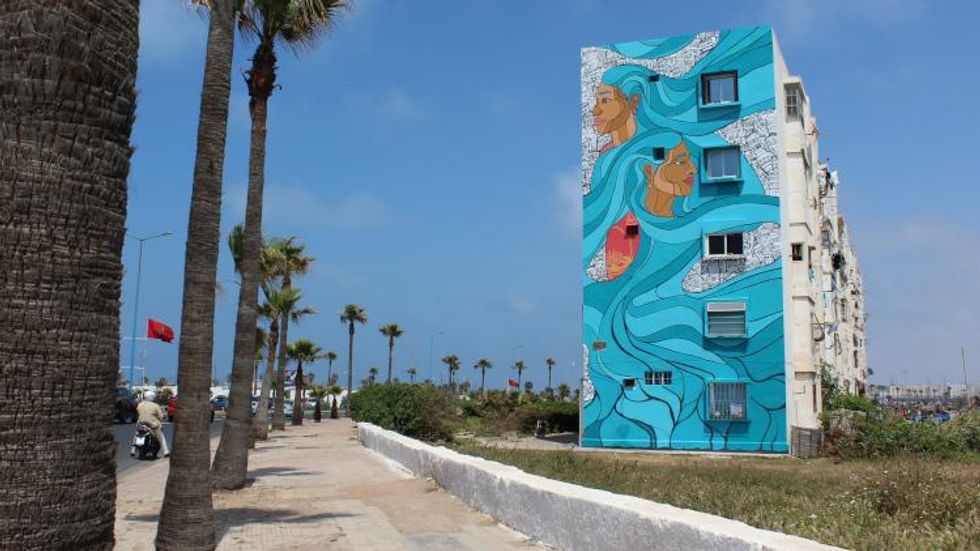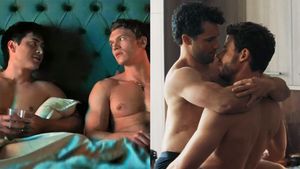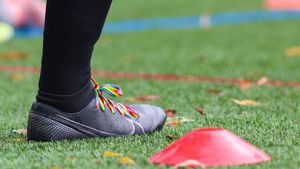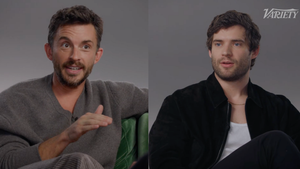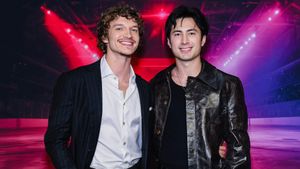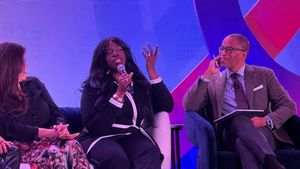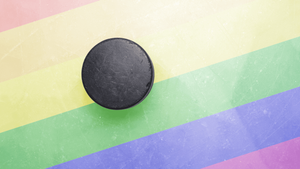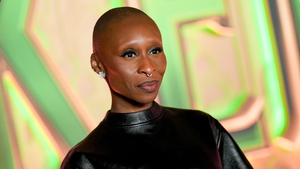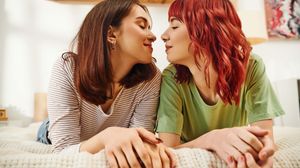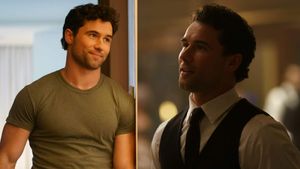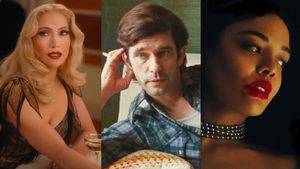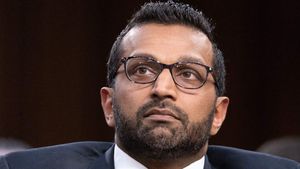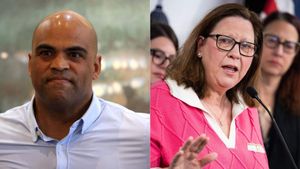Following a successful event in Miami, the “Brand Closet Showroom Social” concept is coming to Palm Springs from April 1-4. Created by marketing mastermind Michelle Collins, the brand closet gatherings take place at hotels — in Palm Springs, it's the fashionable Rowan Kimpton — and offer travelers a unique comingling opportunity with a curated group of some of the hottest local designers, artists, craftspeople, and wellness experts. Bringing these creatives to a hotel allows guests and locals the opportunity to learn about and purchase items without having to search for open brick and mortar stores.
"The social hours and the private showrooms are designed as a sort of traveling membership space which connects the local community, emerging and iconic luxury brands, designers, and experts with travelers seeking discovery and distinct storytelling experiences," Collins says. "We bring a taste of the local community to the hotel guest, while helping global designers and brands connect on a more meaningful level with the open-minded, curious traveler."
Heading up the Palm Springs event, officially called Palm Springs escape, is out artist Sam Kirk. The Chicago native has built a career on spreading beauty around the world, specifically on the sides of buildings and cityscapes. Focusing on intersectional people and the marginalized experience, Kirk has raised eyebrows and brought smiles from New York to Africa. Kirk will be the only artist featured at Palm Springs escape, with participants allowed to view her work, purchase it, and interact with her to gain more insight into her vision and thought process. We caught up with Kirk recently to talk about what inspires her and what to expect at the Rowan.
Tell us about your journey to becoming an artist.
I grew up loving the arts as a kid. It really became a passion of mine as a teenager, in high school. It was really about figuring out about coming out, figuring out my identity. I started to sketch and draw all the things I was feeling inside that I wasn’t able to speak to my family or community about.
That became a key component in my life; using visual art as a way to talk about things I felt passionate about over the years. What began as a hobby and something that was very personal turned into a career unexpectedly, organically. When I was in my mid-20s I started to show work in galleries and started to dabble in public art and the practice really took off from there. I paid attention to how people were responding to it and incorporated that into what I would do with the work; how I would approach the content. In 2010, I ended up leaving my advertising career and becoming a full-time artist. I never expected to be an artist, but organically it turned into a career that I’m really grateful for. Originally I went to school for marketing, communications, and interior design and dabbled in that for 10 years before I started my own art business. This career is the best of every world I can imagine; I get to talk about all the topics that are very important to me and how to use visual imagery to impact people and the world and give back, ultimately.
How does your identity as a biracial queer woman inspire your work?
It’s central to my work because I grew up in the south side of Chicago; even though Chicago has a lot of cultures within the city, it’s a very segregated city. Growing up, we moved a lot, partially because we were a working-class family, partially because we lived in certain areas and sometimes there was discrimination my family would experience, either directly to my mother or over all. So we moved around a lot. What could have probably been something that was traumatic or damaging, I really ended up appreciating because it allowed me to really learn about the cultures of the city.
I’m four different ethnicities and I’m also a queer woman so it was something growing up that made me not an outcast, but definitely not part of the majority; I was always on the outside looking in. It’s a big part of my work, especially with being queer. I look at how different cultures approach the LGBTQ community and try to figure out how can I find commonalities in what these communities are experiencing, as well as the LGBTQ community, and get them to see it through visual pieces. We’re all kind of going through the same thing. We should embrace each other more; we should celebrate these differences more. So who I am has a lot to do with how I gather information throughout my life and how those life experiences have helped me to develop my own identity and that fascination makes me fascinated with other people and how their life experiences have impacted who they’ve become whether it’s their culture or the neighborhood they grew up, where they traveled to. Any life experience that helped them become who they are — or how they haven’t been able to really develop their identity and who they want to be.
 Above, the artist in her studio
Above, the artist in her studio
Many of your canvasses are buildings and city scenes. Do edifices appeal to you more than other mediums?
I love all canvasses. Public art is special to me because it allows me to have a dialogue with the community in a way that I wouldn’t have in my studio practice. When I’m creating in the street — especially the topics I put into my murals, they’re topics that are often challenging perspectives of people in other communities and what their thoughts are and I think the vibrancy of the work allows them to be drawn in and then they start to look at the details and then they really start to see the story in the piece. I love that because I’m able to have those conversations when I’m on the street painting and, if not then, I usually see it on social media or in different ways. That dialogue with the community is important and knowing the work I’m producing is effective. Also, it helps me to see how we’re evolving. A lot of my work is about current events and history and I think murals in particular play a part in the visual history of a neighborhood or a community. You get to see what was happening at a certain time. I appreciate being part of that and seeing how the community responds and reacts to it.
Much of your work focuses on intersectionality and systemic injustice. Do you fear the urgency we had in the summer of 2020 is waning a bit?
I do. I think during COVID people also had more time in ways that they didn’t before. So we saw people getting involved more in a way they might not if they had other events or things to go to. I do fear that it’s slowly disappearing a bit. Hopefully, the impact that we had will remain with those who were involved.
Tell me about Palm Springs escape and what you hope people get out of it.
The brand closet events have been really great. This is the second I’m participating in; the first was in Miami. It’s been a really great experience to reach a different kind of audience. When I’m working with galleries or museums, there’s a certain kind of person interested in art going to those places; they’re seeking it out. In working with the brand closet, I’m able to showcase my work in a different way, to a larger variety of individuals who still appreciate art and specific types of goods, but I’m bringing the art to them as an experience, which really combines the many different ways I work with different mediums.
Public art to me is an experience; yes a lot my work is a 2-dimensional piece but it’s an experience I’m bringing to a neighborhood that people can interact with in different ways; photos, conversations. With brand closet I’m hoping to do that as well.
With Palm Springs, one of the main things we’re doing differently is adding this vinyl fabric onto some of the walls and the pillars to bring some of my public art medium and practice into this space. So, there will be a combination of fine art pieces, some new mediums, some elements that relate to my public art practice.

Above, a mural of Kirk's in Morocco
What was the Miami event like?
For Miami, it was also at a hotel. There was art sprinkled around; similar execution. Miami though, I was one of three artists who participated. It was me seeing how visitors of brand closet responded to my work and they responded very well. For that event, we were focusing on testing pieces; one of them was skateboards. That was for the introduction of skateboarding to the Olympics, held around the same time. It was fun because we gave people the chance to interact with the art. Some of the work was hanging on the walls and I did hand embellished additions for them and some of them we had on wheels so people can jump on the board and ride it. Allowing the work to be flexible [is important]; it can be fine art, something to hang in your house in one way but it can also be something that’s interactive and can be experienced.
For Palm Springs, my art will be one of the main focuses for the event. I’ll be doing a lot more as far as the execution in showcasing the many ways I work with art.
What’s inspiring you now?
I’ve done a lot in Chicago, a lot in New York. Now I’m focusing more on global reach. My wife and I collaborated on a mural we’ll be painting in Costa Rica in May. They just legalized LGBTQ+ marriage last year, we created a piece that celebrates a queer relationship. I’m mostly inspired to get out there and not wait for people to catch up. Through a lot of my career, especially in public art, there were many people who weren’t ready for the content or the topic, even though it’s very positive and uplifting. "I don’t know if we can put a big queer mural on this wall; the community might not be ready," I've heard before.
We’re gonna request [demanding work], we’re going to push for it and not water it down. Right now I’m really excited about creating work that truly celebrates our community and really focuses on sharing our stories and really trying to do it in the many different mediums that I’ve explored so we’re reaching more people.
To find out more about Palm Springs escape, click here. To view more of Kirk's work, click here.





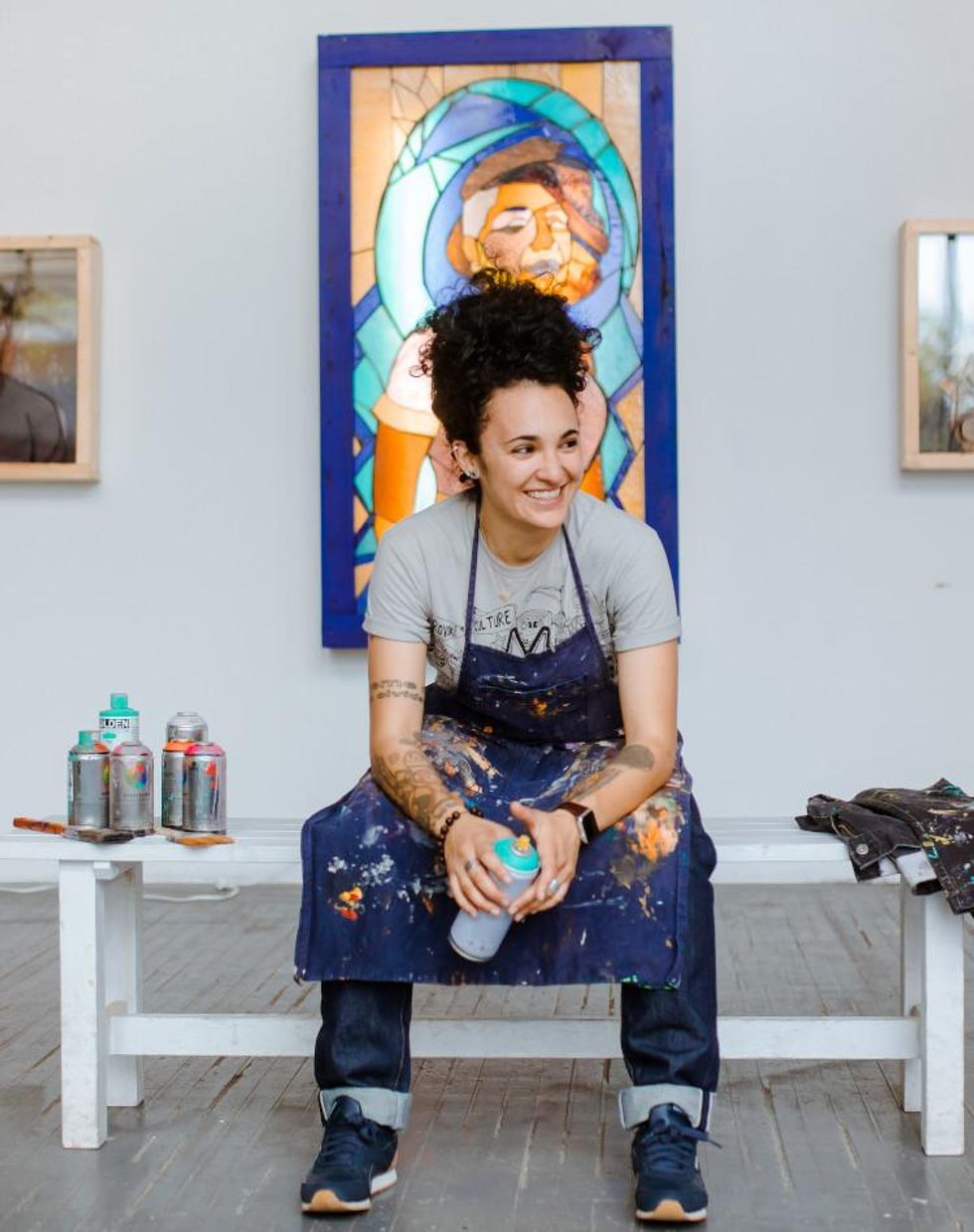 Above, the artist in her studio
Above, the artist in her studio